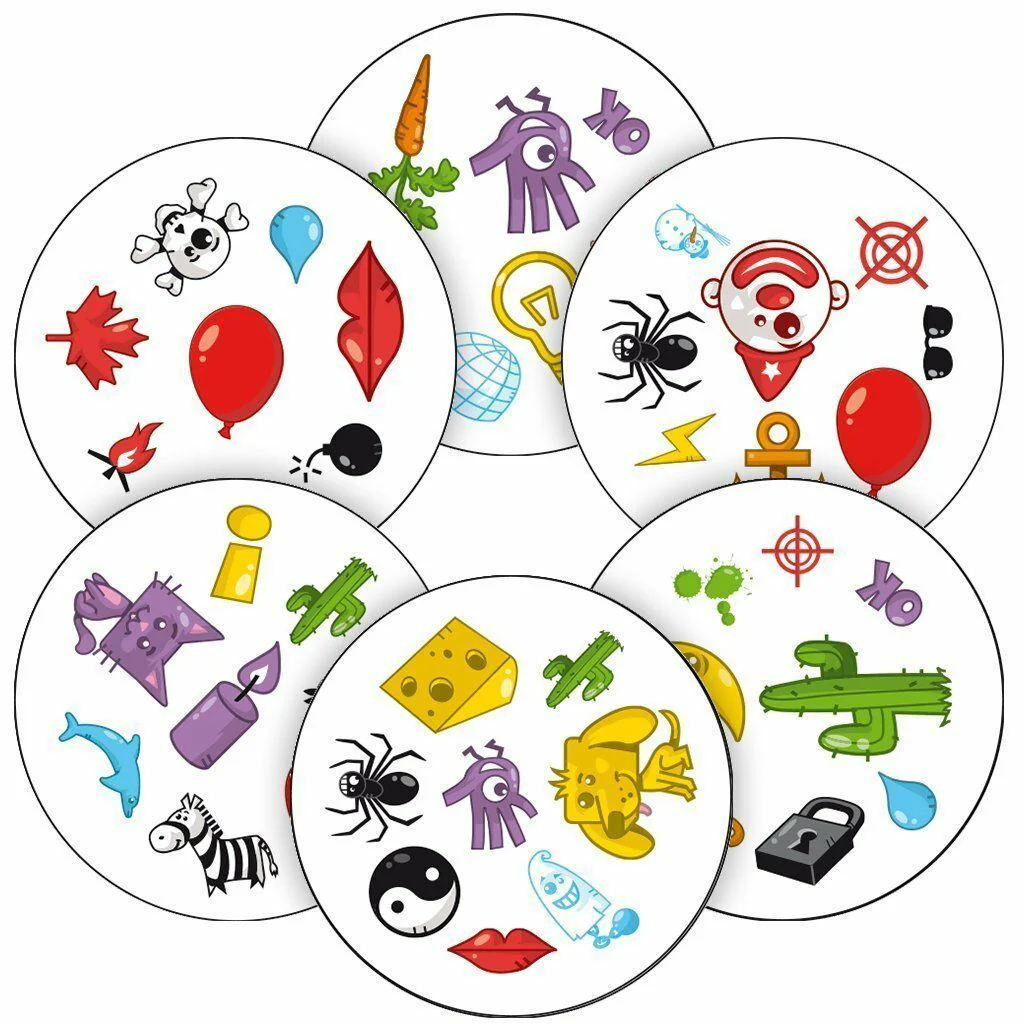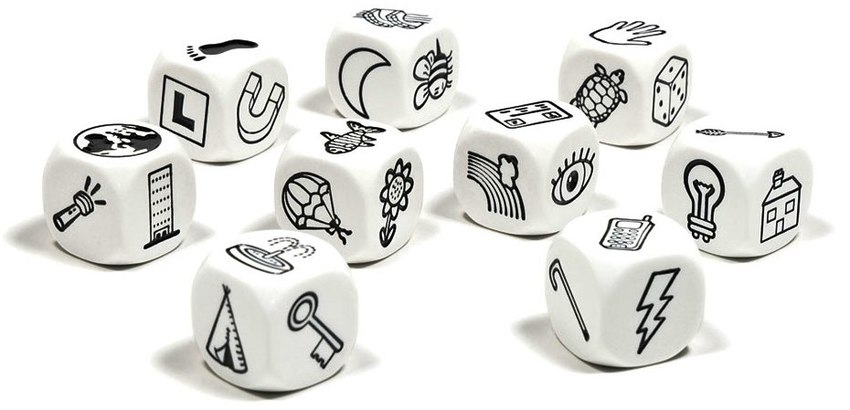There are texts on the boxes, a booklet that describes the rules, and often letters, words, and sentences on the cards or the board. Board gaming creates an environment where words have a place, where reading is everyday and natural, and this can be passed on to the players.
I work with disadvantaged children, so I have seen firsthand what it means when there are no books at home and reading is not part of daily life. In such an environment, every opportunity must be seized to help develop positive attitudes toward reading. They should come into contact with letters and words and be surrounded by texts even if they are not reading yet, as this will form the foundation for their future learning.
In addition, of course, developing various skills in preschool also serves as preparation for reading. And if there are such skills, there are suitable board games to help develop them. Let's take a look at a few.
Visual Perception
Visual perception is an area that we continuously develop in preschool, not only within institutional settings but also at home. This includes shape-background differentiation, where children recognize and distinguish shapes from the background, which will be essential for identifying letters and words. It also includes recognizing, identifying, and understanding directions: left-right, up-down. Confident use of directions is crucial for learning to write and read. Let's look at a few games that excellently develop these areas and are enjoyable for children!


Kiwi
A kiwi is rolling on the ground, who knows where it will stop?
Tools
Four-piece assembleable board, movement cards, guess cards, player markers, cute kiwi
Skills Developed
Working memory, spatial orientation, learning directions, coding
Djeco Mysterix
The odd one out is a classic children's game, and when put on cards, it becomes an exciting, fast-paced card game.
Tools
54 beautifully illustrated, densely packed cards, each featuring one odd one out
Skills Developed
Visual perception, attention to detail, quick thinking skills


Spot It!
Spot it! or Dobble, the key is to pay close attention, notice the matches, and be the fastest.
Tools
55 circular cards in an attractive tin box. The cards feature easily recognizable illustrations in various colors
Skills Developed
Visual perception and shape-background differentiation
Vocabulary Development
Words offer endless possibilities for play, thus vocabulary development can appear in many forms, both direct and indirect. Let's look at examples of each approach.


Story Cubes
A dice game that encourages players to invent stories based on randomly rolled symbols.
Tools
Nine dice, each adorned with unique images on their six faces
Skills Developed
Creativity, storytelling, problem-solving skills


Boggle Junior
Dice, letters, words. A great combination.
Tools
Letter cubes, word cards, a tray, and a rules booklet
Skills Developed
Spelling, word recognition, fine motor skills


Scrabble Junior
A classic children's version. If we love it, we can easily engage the kids with this version.
Tools
Double-sided game board, letter tiles, a tile bag, scoring tokens, and a rulebook
Skills Developed
Spelling, vocabulary, strategic thinking skills


Zingo!
If we take a step back to focus on developing phonological awareness, "Zingo!" is a great recommendation.
Tools
Zingo! Zinger device, 72 picture tiles, and 6 double-sided Zingo! cards
Skills Developed
Phonological awareness, vocabulary, matching skills
But! Let's not forget that when we play board games, the primary goal is the game itself. Developmental goals are in the background, appearing as secondary benefits. As parents and educators, it's good to be conscious in our game selection, but when we play, we should focus on the game and the child. We want to create an enjoyable and cheerful gaming experience, and if it's also beneficial in other ways, that's just a bonus.
In 2023, Máté Lencse accredited a board game pedagogy training for preschool teachers, developed in collaboration with innovative educators from a Budapest kindergarten. He has been involved in board game pedagogy since 2013 and regularly works with disadvantaged preschool-aged children.
Explore Board Games Further
No spam, ever. Unsubscribe anytime.
Help Your Child Fall in Love with Reading
A comprehensive educator's guide to implementing game-based reading development in any learning space

